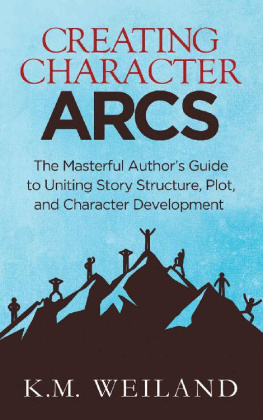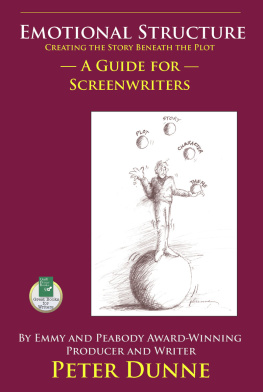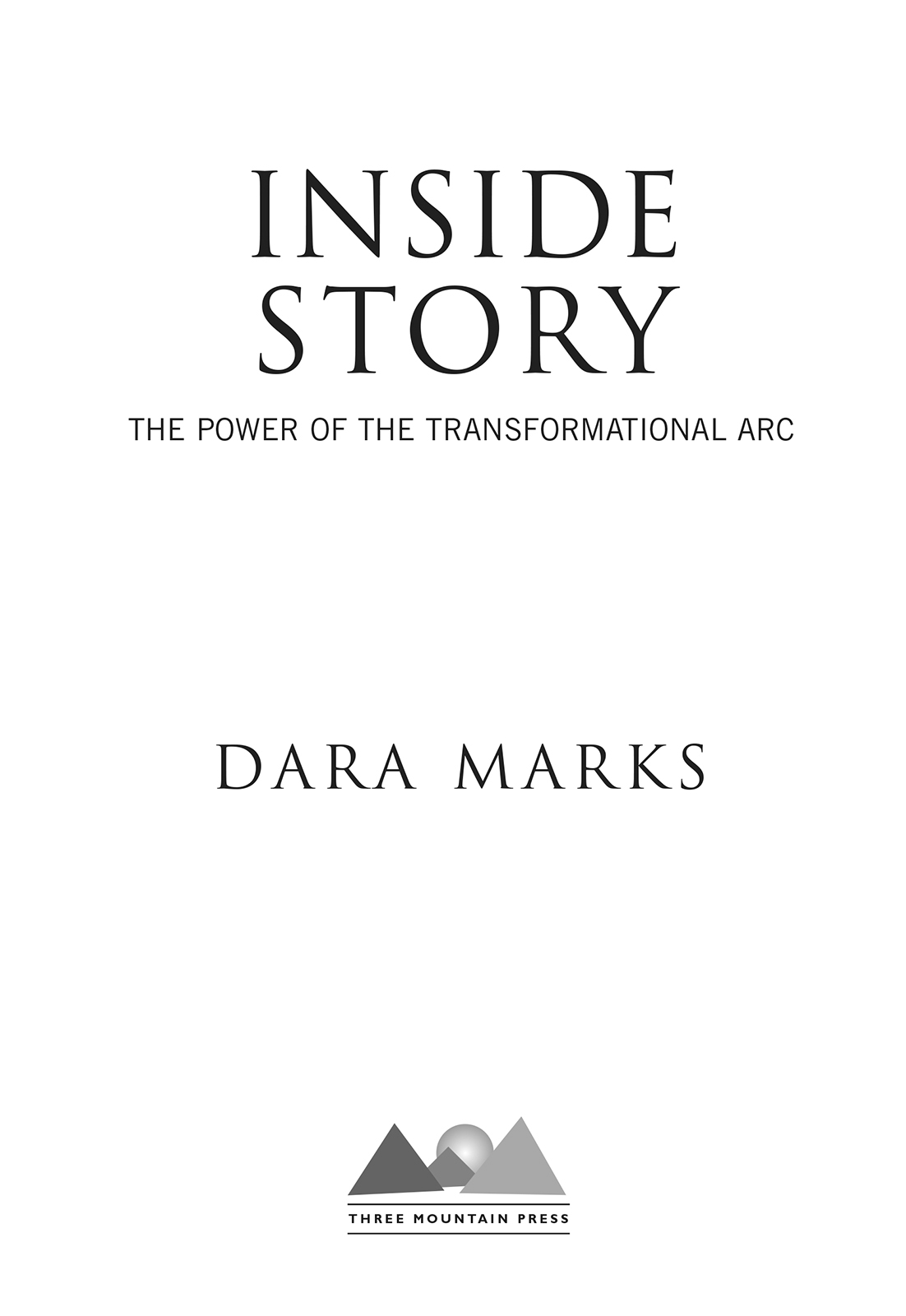PRAISE FOR INSIDE STORY:
THE POWER OF THE TRANSFORMATIONAL ARC
by Dara Marks
Nobody can give a writer talent, but Dara Marks can guide us through the craft of telling our stories in the most thoughtful and thought-provoking way.
Iris Rainer Dart, Author, Beaches
They say you cant learn screenwriting from a book. They were rightuntil Inside Story. This is a book every screen--writer must read before writing the words: Fade In...
Andrew Smith, Screenwriter
The Main Event, Whos That Girl?
Former Head Writer, Saturday Night Live
Dara Marks has done it!!! Just when one thinks there can be nothing new to say about screenwriting, along comes Dara Marks with Inside Story! Her book contains the best writing advice of all, Dare to be guided by your passion. Thats as good as it gets and Daras Inside Story is as good as it gets.
Lew Hunter, Writer/Producer
Chairman Emeritus and Professor
UCLA Department of Film and Television
Dara Marks has written a breakthrough book on the art of crafting extraordinary stories. Inside Story takes you where few other books about writing caninside not only the structure and substance of great stories but also inside the writers heart, mind, and soul from which great stories spring.
Clyde W. Ford, Author
The Hero with an African Face
The Long Mile (Winner 2006 IPPY Award)
Replete with examples from both classic and contemporary films, Dara Marks Inside Story offers fresh insights into screenwriting structure, enabling writers to better hone their craft and elevate their art.
Professor Richard Walter
UCLA Screenwriting Chairman
INSIDE STORY
Copyright by Dara Marks, Ph.D. All rights reserved. No part of this book may be reproduced or transmitted in any form or by any means, electronic or mechanical, including photocopying, recording or by an information storage system, without permission from the publisher.
Publishers Cataloging-in-Publication Data
Marks, Dara.
Inside Story : The Power of the Transformational Arc /
Dara Marks, Ph.D. -- 1st ed. Ojai, Calif. : Three Mountain Press, 2007.
p. ; cm.
Softcover: 978-0-9788129-1-1
Hardcover: 978-0-9788129-0-4
Epub: 978-09788129-3-5
Mobi: 978-09788129-2-8
Includes bibliographical references.
1. Motion picture authorship--Handbooks, manuals, etc.
2. Screenwriters--Handbooks, manuals, etc. 3. Plots (Drama, novel, etc.) I. Title.
PN1996 .M37 2007 | 2006932223 |
ACKNOWLEDGMENTS
With gratitude for permission to reproduce the following. Sony Pictures Entertainment for the use of excerpts from the screenplays The Fisher King written by Richard LaGravenese 1991 and A Few Good Men written by Aaron Sorkin 1992. Warner Bros. Entertainment, Inc. for the use of excerpts from the screenplays Goodfellas written by Nicholas Pileggi and Martin Scorsese 1990 and Casablanca written by Julius J. Epstein, Philip G. Epstein, and Howard Koch 1942. MGM for the use of excerpts from the screenplay Rocky written by Sylvester Stallone 1976. Twentieth Century Fox Film Corp. for the use of excerpts from the screenplay Romancing the Stone written by Diane Thomas 1984. Paramount Pictures for excerpts from the screenplays Ordinary People written by Alvin Sargent 1980 and American Beauty written by Alan Ball 1999.
Cover and Book Design: Patricia Bacall
Author Photograph: Xaque Gruber
Editing: Brookes Nohlgren
| Published by Three Mountain Press, Ojai, CA
www.threemountainpress.com
Direct inquiries to: |
To my mother and father,
who encouraged me to try my wings and fly.
To my husband,
who inspired me to soar.
ACKNOWLEDGEMENTS
A ll great stories are about relationships; my own is no exception. In gratitude:
To my mentor, Dr. Linda Seger. Her wisdom and generosity of spirit have been a guiding influence throughout my life and career.
To all of my extraordinary teachers who have helped illuminate the path that has led to this book, especially: Dr. Ginette Paris, Dr. Dennis Patrick Slattery, Dr. Gilles (Zenon) Maheu, and the amazing staff and faculty at Pacifica Graduate Institute.
To those who gave hands-on support, wise counsel, steadfast commitment, and relentless prodding: Robin Haney, Julie Wellings, Heather Hale, Tinker Lindsey, Carol Abbott, Eugenia Bostwick-Singer, Raymond Singer, Lisa Loomer, Joe Romano, Dino Audino, Deborah DeFuria, Bess Armstrong, Catherine Hart, David Huff, Dana White, Constance Welsh, Donie Nelson, Janis Cohen, Barbara Nussbaum, Ellen Reid, Patricia Bacall, Ghislain Viau, Brookes Nohlgren, Xaque Gruber, Laren Bright, Robert Menna, Wanda Webster, Richard Marcus, and my extraordinary family: Libby, Tim, Jane, Jeff, Vicki, Fred, Zachary, Lauryn, and Eleanor Marks.
To my students and clients, who continue to teach me everything I know about the art and craft of screenwriting.
To all of my extended family and friends, who show me how to live and who keep me focused on what is important.
To Randy and Justin, who make it all worthwhile.
And always to the Muses, who forever guide me to the truth,
though I sometimes forget to listen.
We are lonesome animals.
We spend our life trying to be less lonesome.
One of our ancient methods is to tell a story
begging the listener to say
and to feel
Yes, thats the way it is,
or at least thats the way I feel it.
Youre not as alone as you thought.
~ J OHN S TEINBECK
CONTENTS
PART I
LAYING A STRONG FOUNDATION
PART II
BUILDING THE ARC OF CHARACTER
INTRODUCTION
O ver the years in my work as a script consultant, Ive found that notes telling writers to write whats in your heart, add more depth, or find your authentic voice arent especially useful. Its not that these problems dont exist; in fact, they are often the primary reason a story feels flat and is un-involving. But, achieving depth in any artistic endeavor isnt just a thing you do; its the totality of the experience. Its the result of an in- depth process that grows with the story as opposed to something that is tagged on in the end as an afterthought.
No one questions a writers need to have a strategy or technique for developing the physical, external plotline of a story (e.g., catching the killer, solving a crime, making it to the altar on time). Most serious writers study the basic elements of story structure and learn how to organize a film script, novel, or play in a manner that resembles the form and serves the dramatic function. However, when it comes to expressing inner values and establishing a personal perspective on a story, writers are often guided only by their instincts or intuition and a little luck.
Instinct and especially intuition are absolutely essential for getting to the more meaningful, authentic aspects of a story, but they can easily degenerate into random guesswork if theyre all you have to rely on. The starting point for any artistic creation is always at the level of intuition because its where new ideas are conceived. However, new ideas, even great ones, seldom rise to the level of consciousness fully formed. They often begin as a jumble of thoughts, impressions, feelings, and images that can be as confusing and contradictory as they are inspiring and compelling.


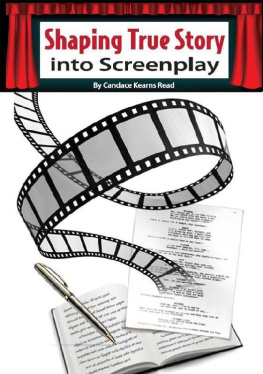

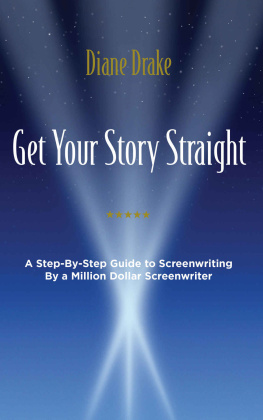
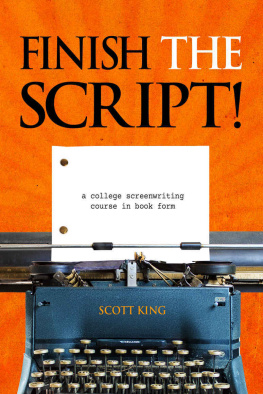
![Watt - The 90-day screenplay : [from concept to polish]](/uploads/posts/book/103527/thumbs/watt-the-90-day-screenplay-from-concept-to.jpg)
